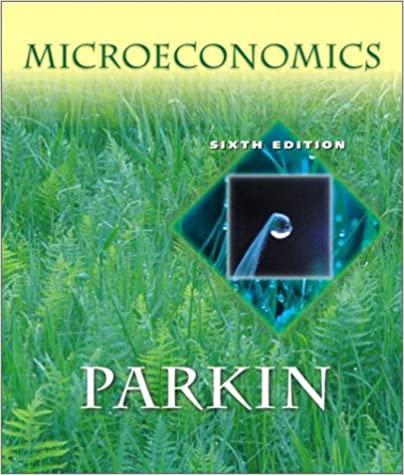Question
1) A company issued five-year, 7% bonds with a par value of $325,000. The company received $318,175 for the bonds. Using the straight-line method, the
1) A company issued five-year, 7% bonds with a par value of $325,000. The company received $318,175 for the bonds. Using the straight-line method, the amount of interest expense for the first semiannual interest period is:
A) $10,692.50 B) $11,375.00 C) $12,057.50 D) $22,750.00 E) $24,115.00
2) A company issued five-year, 7% bonds with a par value of $475,000. The market rate when the bonds were issued was 6.5%. The company received $540,075 cash for the bonds. Using the straight-line method, the amount of recorded interest expense for the first semiannual interest period is:
A) $10,117.50 B) $16,625.00 C) $18,902.62 D) $37,805.25 E) $33,250.00
3) A company issues 7%, 20-year bonds with a par value of $800,000. The current market rate is 7%. The amount of interest owed to the bondholders for each semiannual interest payment is.
A) $0 B) $28,000 C) $56,000 D) $800,000 E) $1,600,000
4) A company issues bonds at par on June 1. These 7% bonds have a par value of $1,200,000 and pay interest annually. How much total cash interest is on June 1 by the bond issuer?
A) $0 B) $7,000.00 C) $240,000.00 D) $35,000.00 E) $84,000.00
5) On December 1, Martin Company signed a $3,600, 4-month, 7% note payable, with the principle plus interest due on March 1 of the following year. What amount of interest expense is accrued at December 31 on the note?
A) $0 B) $21 C) $36 D) $84 E) $252
6) A company purchased property for $100,000. The property included a building, a parking lot and land. The building was appraised at $61,500; the land at $44,500 and the parking lot at $17,900. The value of the land that will be included in the accounting record is:
| A) $0 | |||||||||||||||||||||||||||||||||||||||||||||||||||||||||||||||||||||||||||||||||||||||||||||||||||||||||||||||||||||||||||||||||||||||||||||||||||||||
| B) $35,916 | |||||||||||||||||||||||||||||||||||||||||||||||||||||||||||||||||||||||||||||||||||||||||||||||||||||||||||||||||||||||||||||||||||||||||||||||||||||||
| C) $41,500 | |||||||||||||||||||||||||||||||||||||||||||||||||||||||||||||||||||||||||||||||||||||||||||||||||||||||||||||||||||||||||||||||||||||||||||||||||||||||
| D) $44,500 | |||||||||||||||||||||||||||||||||||||||||||||||||||||||||||||||||||||||||||||||||||||||||||||||||||||||||||||||||||||||||||||||||||||||||||||||||||||||
| E) $100,000
7) When originally purchased, a vehicle had an estimated useful life of eight years. The vehicle cost $24,110 and its estimated salvage value is $1,950. After four years of straight-line depreciation, the asset's total estimated useful life was revised from eight years to six years and there was no change in the estimated salvage value. The depreciation expense in year 5 equals:
|
Step by Step Solution
There are 3 Steps involved in it
Step: 1

Get Instant Access to Expert-Tailored Solutions
See step-by-step solutions with expert insights and AI powered tools for academic success
Step: 2

Step: 3

Ace Your Homework with AI
Get the answers you need in no time with our AI-driven, step-by-step assistance
Get Started


